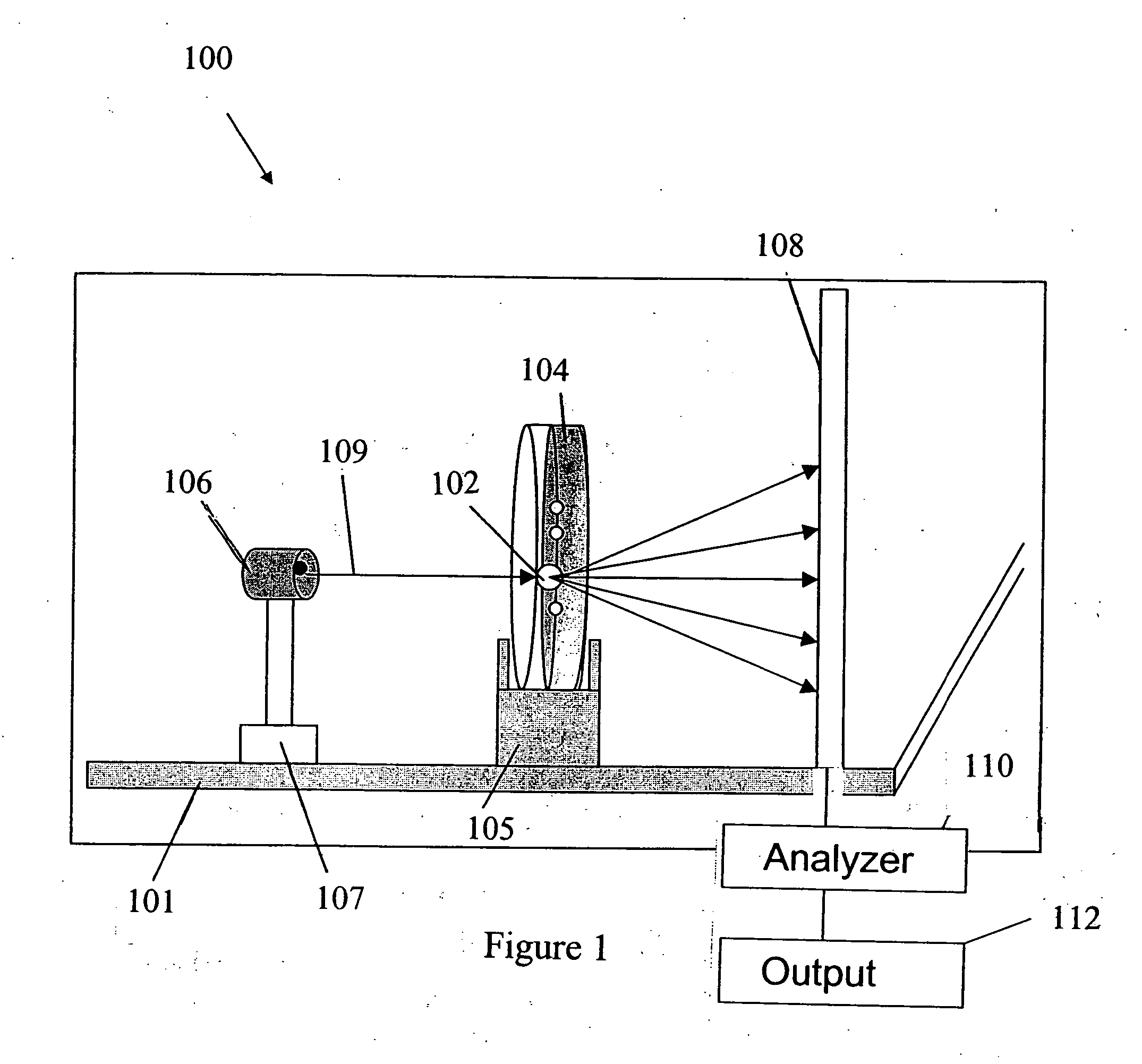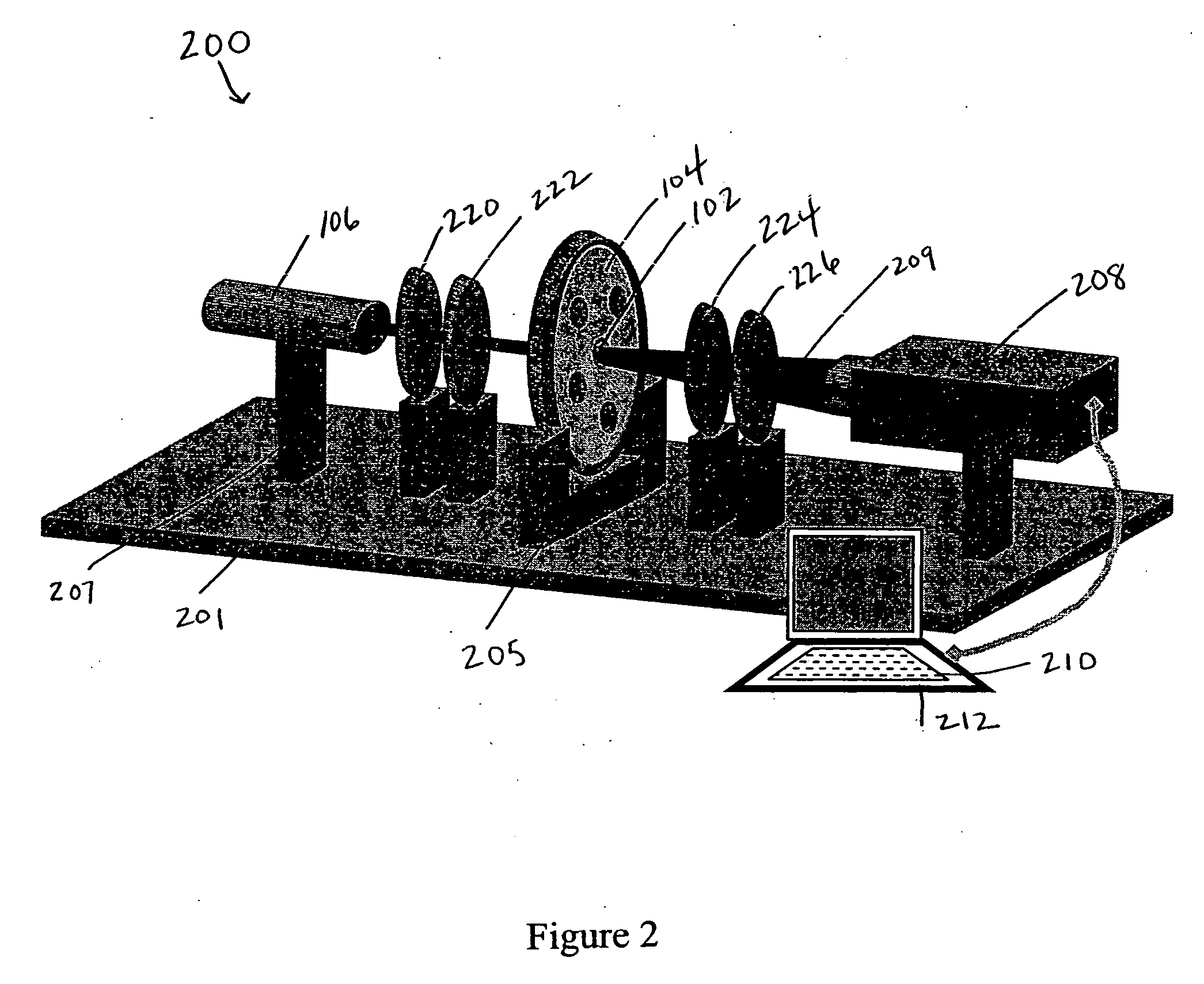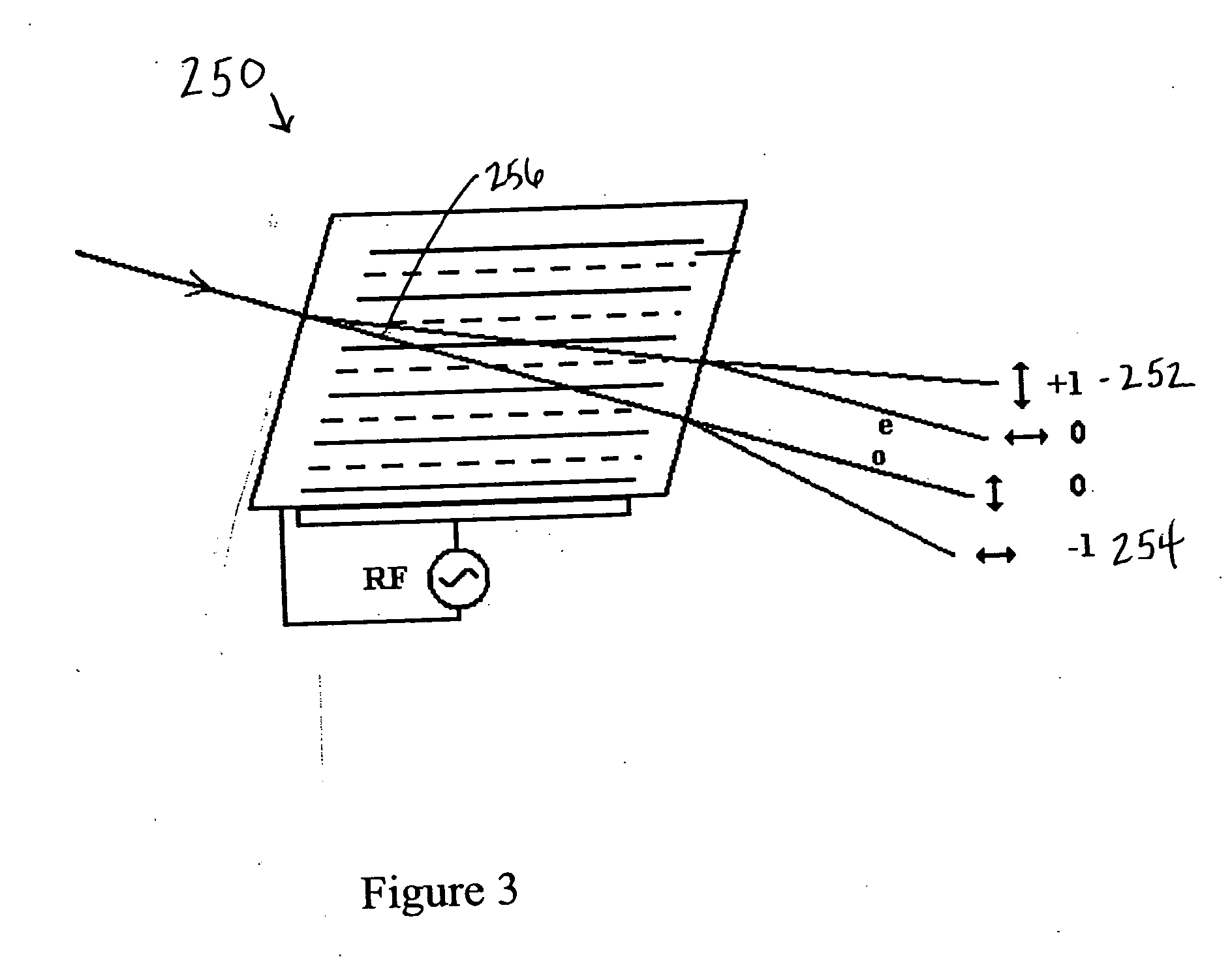System and method for rapid detection and characterization of bacterial colonies using forward light scattering
a technology of forward light scattering and bacterial colonies, applied in the field of bacteria colonies, can solve the problems of requiring a skilled technician, putting the public at risk, and using sophisticated and expensive molecular tools
- Summary
- Abstract
- Description
- Claims
- Application Information
AI Technical Summary
Benefits of technology
Problems solved by technology
Method used
Image
Examples
example 1
Colony Culture Conditions
[0035] The bacterial cultures listed in the tables were obtained from a frozen glycerol stock (−80° C.) from a collection at Purdue University. The bacteria were grown in brain heart infusion broth (BHI) (Difco, available from Becton Dickinson and Company, Franklin Lakes, N.J.) for 18-24 h at 37° C. The cultures were propagated twice in BHI overnight at 37° C. at 140 rpm in a shaker incubator (New Brunswick Scientific, Edison, N.J.). For individual colony growth, BHI broth supplemented with 1.5% agar (Difco) in Petri dishes was used.
[0036] Bacterial plates for light scattering experiments were prepared from cultures grown in BHI. The cultures were serially diluted in sterile 20 mM phosphate buffered saline, pH 7.4 (PBS) so that the dilutions when plated would produce about 30-50 colonies per plate. The diluents were evenly distributed on the surface of BHI agar plates, in duplicate, using a bent glass spreader and were incubated at 37° C. for 18-36 h in a ...
example 2
Comparison of Listeria Colony Characteristics
[0037] Several strains of Listeria were cultured according to the protocol described above and were placed in the system 100 where each colony was subjected to a laser diode having a wavelength of 635 nm and the forward light scatter was detected on a detector. The forward light scatter pattern was collected and analyzed according to the attributes shown in Table I above. The light scattering patterns of L. innocua, (B) L. monocytogenes, (C) L. ivanovii, (D) L. Welshimeri, (E) L. seeligeri, (F) L. grayi are shown in FIG. 4A-F.
[0038] Results of the analysis showed the following: The scattering pattern of L. innocua showed a clear central spot, isotropic background, and clear rings. The ring is relatively thick and diffuse, and the average intensity of the whole pattern appears to be high. The scattering pattern of L. monocytogenes indicated the presence of a diffused central spot with rings. The innermost ring is small and generally has ...
example 3
Mueller Matrix Characterization
[0039] As discussed above for the embodiment shown in FIG. 2, the full 16 elements of Mueller matrix measurement are possible to determine. The Mueller matrix shown below will be used to determine additional characteristics of the stains of bacteria analyzed in the system 200. The Mueller matrix is a 4×4 matrix, which relates incident stokes parameter Si0-Si3 and scattered stokes parameter Ss0-Ss3. (S S 0S S 1S S 2S S 3)=(M11M12M13M14M21M22M23M24M31M32M33M34M41M42M43M44)(S S 10S S 11S S 12S S 13)
[0040] The matrix will be used to describe the polarization properties of scattered field with given incident field. Conversely, if the input and scattered stokes parameters are measured, the characteristic information of the objects may be extracted. Performing this measurement in two dimensional area, polarization characteristics of the bacterial colony will be obtained. In the embodiment shown in FIG. 1, the single intensity measur...
PUM
| Property | Measurement | Unit |
|---|---|---|
| wavelength | aaaaa | aaaaa |
| optical wavelength | aaaaa | aaaaa |
| distance | aaaaa | aaaaa |
Abstract
Description
Claims
Application Information
 Login to View More
Login to View More - R&D
- Intellectual Property
- Life Sciences
- Materials
- Tech Scout
- Unparalleled Data Quality
- Higher Quality Content
- 60% Fewer Hallucinations
Browse by: Latest US Patents, China's latest patents, Technical Efficacy Thesaurus, Application Domain, Technology Topic, Popular Technical Reports.
© 2025 PatSnap. All rights reserved.Legal|Privacy policy|Modern Slavery Act Transparency Statement|Sitemap|About US| Contact US: help@patsnap.com



